Practicing Solidarity, Living Values: A Conversation with Mizna
On cultivating an ongoing practice of intention, meeting the moment, and bringing community together around culture
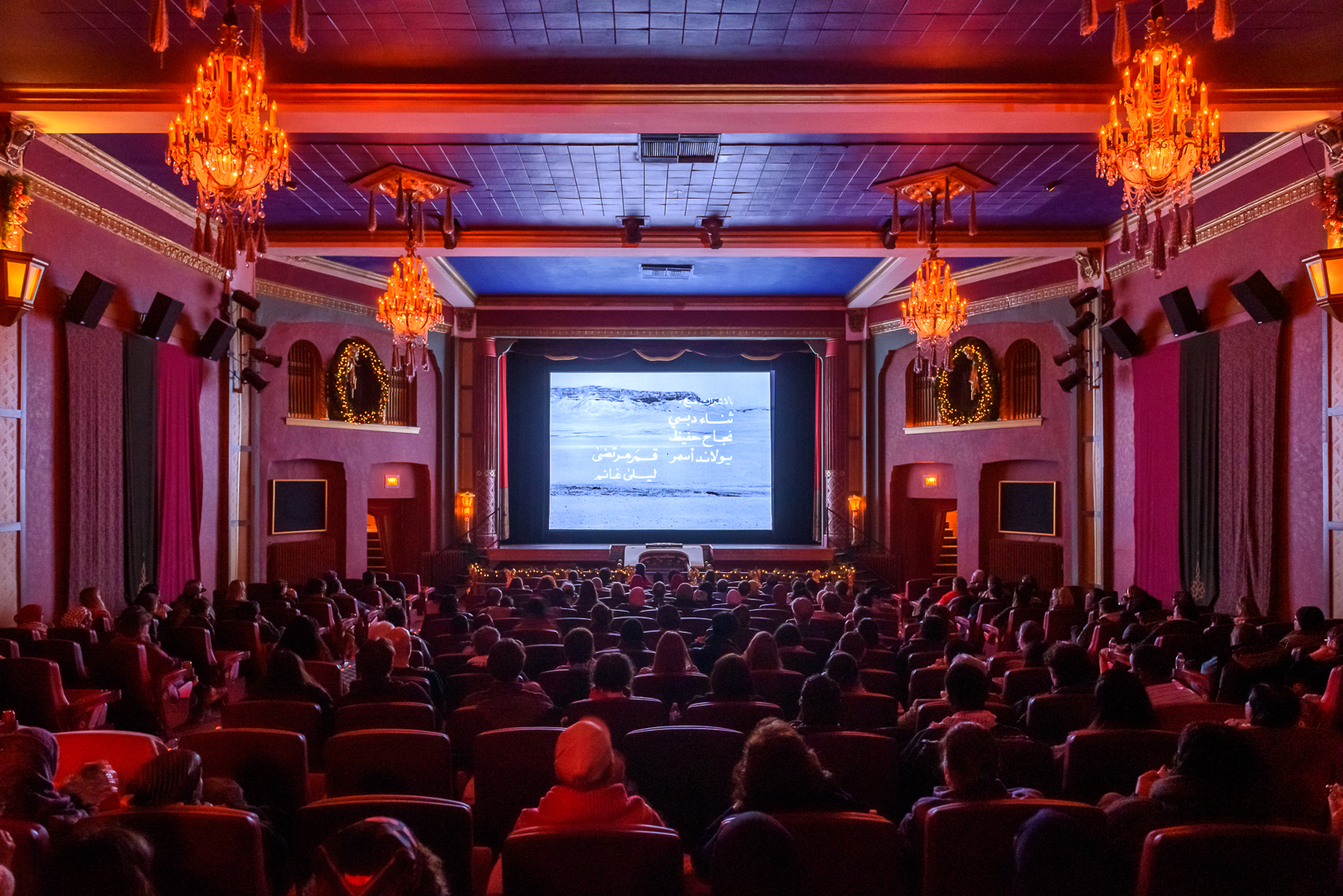
The genocide in Palestine–what Writers Against the War on Gaza name as the Nakba that never ended–is a defining issue for artists and arts institutions. The world is witnessing a year of Israel’s brutal attacks on Gaza, and the United States government’s backing of the sieges against Palestinian people on their own homelands.
Many artists and cultural workers who have expressed solidarity with Palestine and have called for a ceasefire have been criticized, surveilled, and had their careers negatively impacted. Within the Twin Cities, artists and writers have exerted pressure on arts organizations and publishers to comply with the BDS movement, call for a ceasefire, and adopt the Palestinian Campaign for the Academic and Cultural Boycott of Israel (PACBI). The poets Su Hwang and Aurora Mattia terminated book contracts for upcoming books with publishers Milkweed Books and Coffee House Press, respectively, for the publishers’ incomplete adherence to the cultural boycott. In her open letter of termination to Milkweed Books, Hwang wrote: “Let this stand as testament and clarion call that dialogue, however messy, is the way forward and is preferable to silence or neutrality. There is no expiration date to this arduous work toward accountability, equity, and care.”
The arts have never been a neutral space or a space separate from lived political struggle. The multiple and complex histories of social movements ranging from decolonial struggles, abolitionist movements, and AIDS activism reveal that tangible, financial, and ideological decisions are made in the arts and have wide-reaching consequences. The arts are intricately woven into the work of making political liberation possible, yet the twin forces of capitalism and settler colonialism rely on a practice of forgetting, of enabling by making relations invisible. But decisions are made every day by arts organizations and artists, with economic and cultural import and spiderweb-like reach. (Currently, as noted by Index of Cultural Institutions & Collectives’ Stance Towards the Current Palestinian Liberation Movement, the Walker Art Center has remained silent on the ongoing 2023/2024 genocide in Palestine.)
As writers like George Abraham and Sarah Aziza, Vajra Chandrasekara and Fargo Tbakhi have named, “Palestine will be free because Palestine frees us.” This is because, in being clear about the set of colonial, economic, and ideological forces that exert pressure on maintaining a Zionist status quo, the nature of all of our entangled histories of struggle is revealed. Though this appears like a tall order, an immersive and prismatic view of social relations, it is a thought process based on the nitty gritty of making decisions. How do values inform production processes and relationships between artists and organizations? How do we follow the talking point to the dollar bill behind it?
It is in this context that I convened with Lana Salah Barkawi, the Executive and Artistic Director of Mizna, a Twin Cities-based arts organization celebrating its twenty-fifth anniversary this year. The organization centers the literary and film arts by Arab and Southwest Asian and North African-identifying (SWANA) artists. Like many arts organizations, Mizna has featured the rich creative expression of Palestinian artists in its years of producing its literary magazines, film screenings, and reading series. Notably, Mizna stands with the material struggle of the Palestinian people–not only in this moment of the ongoing genocide, but since its emergence as an arts platform. Compliance with the BDS movement is one of Mizna’s named public values, and a foundational practice for the organization.
Since October 7, 2023, Mizna’s art programming has expanded. The organization has hosted numerous poetry readings, film screenings, and spaces for community grief and the expressions of solidarity with Palestine. These events have included a reading by Gazan poet and Mizna Fellow Yahya Ashour who has been stranded in the US since the genocide began, a weekly fast for community members calling for ceasefire, and an installation of flags, each handwritten with the name of a martyr killed in Gaza. As the attempts toward the genocide and expulsion of Palestinians has continued, Mizna has been steadfast and ardent in its public message. Their stewardship of arts spaces and artists show how arts organizations can meaningfully practice solidarity–even within structures of systemic inequality.
––aegor ray

This conversation between aegor ray and Lana Salah Barkawi took place throughout this year, in person and virtually, and has been condensed for length.
AEGOR RAYHow do you see Mizna’s role in the arts?
LANA SALAH BARKAWIIt’s our twenty-fifth anniversary this year, and the organization started a few years before I started volunteering. It was this incredible space that kind of preceded a lot of cultural conversations that are now very well known about cultural representation and diversity, equity, and inclusion. These ideas were really kind of baked into the origin story of Mizna in the late 90s.
Mizna is a culturally-specific organization with a mission to center film and literature and visual art from artists who are Arab and Southwest Asian and North African-identifying. And the impetus is that, within the context of the U.S. and the West in general, our community is misrepresented, spoken about, vilified. The idea of creating a space for artists to do their work on their own terms is the spark that began Mizna–in order to specifically publish a literary journal, also called Mizna.
The organization was started by really engaged and smart people who were thinking about these ideas. Having come into the role of Executive Director well into the organization’s life in 2011, I was trying to learn how to talk about the organization. I realized that there are so many buzzwords that are used in the art field that Mizna embodies in a really authentic way. We didn’t think to put vocabulary around, or framing around, these practices, because they were second nature to what we do and why we do it. For example, of course, we were going to be an organization by Arabs and SWANA people for Arabs and SWANA people. Of course, our leadership would reflect the community. Of course, the board would reflect the community. Of course, we are paying artists for their work, from the days when we didn’t have a budget to pay any staff. If we’re going to publish a journal, the authors are going to get an honorarium. These things that are not common, as we’ve learned, in the literary world or the arts world, were just baked into what we do. Of course, we’re going to be led by values that are anti-colonial and that we’re going to find solidarity in our work with other communities struggling for liberation.
We’ve learned to put language around it and really name it and be proud of it. And at the same time, let us never sit on our laurels or take these values for granted–these ideas are things to actively stoke and come back to in an iterative way. So the work of being true to your values is never complete. It’s a process.
ARHow do you maintain the clarity of Mizna’s values, specifically towards material ends?
LSBI guess that’s where it’s important not to have values just sit on the shelf, like you’ve gone through a strategic planning process with a consultant and you’ve articulated your mission, vision, values, and you’ve checked that box off, and then it just goes into a file in your Google Drive or whatever. You are working with intention and thinking about how those values inform everything you do.
And so for example, in publishing a print journal, there are implications that have to do with adhering to our values and being ethical about it. We always work with local printers, but we’re also thinking about the implications of our decisions and where we put our money. So, when we learn that our printer is the beta tester of a really state-of-the art, digital printing process that’s an HP technology, and that technology was developed in Israel, and HP is also very heavily involved in the structure of the occupation in terms of surveillance and how the technology at checkpoints actually occurs and so on. So we can’t print a journal using that technology–it’s as simple as that.
If we do, what are we doing? Doesn’t that undo the incredible content we’re publishing that’s speaking against these systems and speaking for liberation? Bringing in those kinds of knowledges into our decision-making and into our processes must be what we do. And it’s not always easy, and it can get in the way of taking decisive action. We can’t help but consider those details because they matter.
That’s not to say that it’s completely pure work, because we live under a capitalist system and we have to make decisions about funding streams, and those decisions are not always clear, but we try our best and we engage in those conversations. We try to be transparent about it too. It’s an ongoing practice of intention.
ARThis is revelatory for me as an artist, hearing that your values keep you accountable. Sometimes I can perceive arts institutions as at a remove from how these solidarity practices actually exist between people.
I’ve found that Mizna really integrates that you’re an organization, but you are also firmly rooted in the practices that have kept our people going for so long. So, as a distinctly anti-colonial organization, could you speak on the role of the arts in movement work?
LSBOne thing I want to tease out a little bit is the idea that we are anti-colonial, and actually maybe this is a place where our values are needing a refresh on our website.1 We’ve been talking about this internally–that we can’t claim to be anti-colonial, not literally dismantling the colonial project that is the United States. We are maybe decolonizing or trying to resist colonial structures and practices. So when we think about prescriptions in editing or things like that, we try to really be mindful about why systems that we exist in exist, and how we can be more mindful about whether or not we adhere to them.
As for the role of art in the time of a genocide, frankly, I don’t know. I don’t know. I mean, I think that the spaces that we’ve been trying to create since October 7 have been spaces where community can come together around culture and mourn together, grieve together, and be in a space where there’s a mutual understanding that this is a space for you, and that there isn’t an explanation that you have to bring to justify yourself. It’s not a neutral space, it’s not a space that’s trying to be balanced. So I think that’s something that feels like a relief in the work that we do. That’s the intention, anyway. And that’s been true.
And then it’s at a time like this–in such a crisis moment–that people are shattered, and bearing witness to such horrors that people in diaspora feel very deeply, and in a very tangible way. The space for just the relief of being together, without the burden of explanation, feels powerful. And it’s hard to say what’s the point of culture right now, except to say that artists are the keepers of our collective consciousness, that there’s so many incredible thinkers and makers who are writing works, who are making films that help us all digest and process what’s going on and help us imagine a different world.
I think in a time like this, there are two time scales that you can think of in terms of cultural production. There’s the very urgent responses of the moment and then there’s the longer-term work that will come from this. And I think it’s important to hold both. Recently we’ve been doing events where poets are reading works that are very visceral, responding to the moment right now, that are newly written. And then we’re also showing films from two years ago, from 15 years ago, that are resonant to the moment and that are exploring the colonization of Palestine as something that has a history, that didn’t start on October 7.
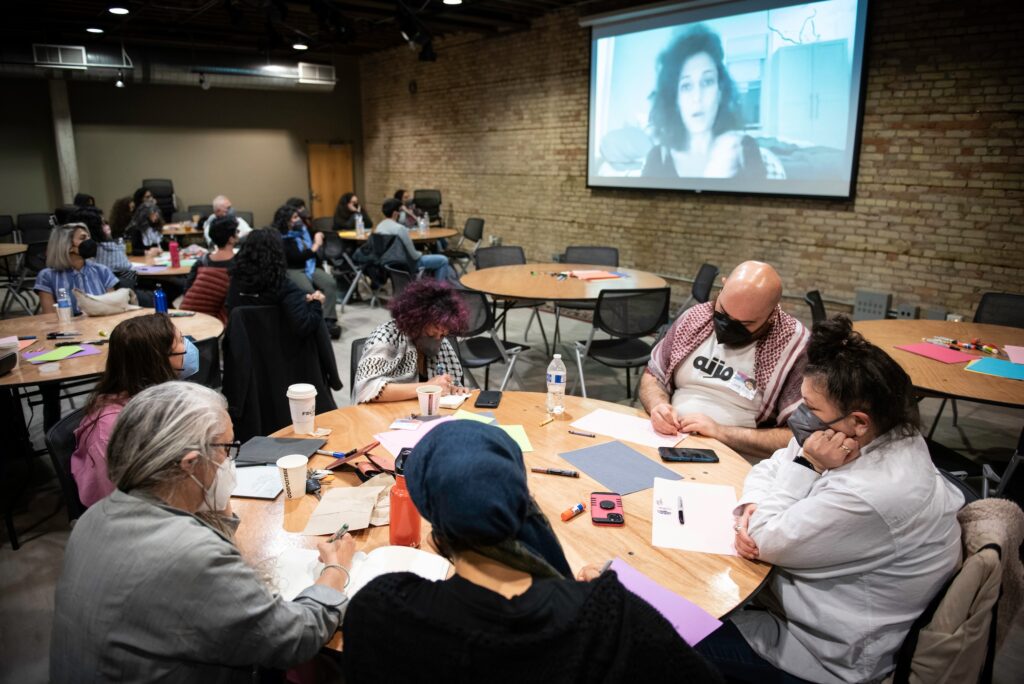
ARCould you speak a little bit about RAWIFest, the literary festival held in partnership with the Radius of Arab Writers, at the end of October 2023?
LSBMizna+RAWIFest was really interesting. We had been planning it for two years and didn’t expect, of course, that it would happen weeks after a genocide had begun. After consideration, we decided to go ahead with it because it had already planned to be very intentionally small. There was a lot of work to make sure it was COVID-safe. And mainly because of that, it was a small gathering of artists of the Arab and SWANA community, a national gathering with our partners at the Radius of Arab Writers. It’s their biannual conference that we have occasionally co-presented in Minneapolis, and this was one of those years.
We decided to go ahead with it, but also to, as needed, make it a space for collective grief and being there for one another. Our keynote speaker was a Palestinian poet, Hala Alyan, and she wasn’t able to visit in person, but gave an incredibly moving offering by video. She was talking about ideas that she’s since developed further–of the power of bearing witness, the strange remove that we find ourselves in here in the West, in a country that’s actively subsidizing the genocide and green-lighting it. She spoke about the importance of it, of bearing witness, of self-care at this moment, which is a hard thing to really think about, and it can feel like a very privileged thing to be thinking about.
But she was talking about the fact that none of the realities of a genocidal machine are meant for human beings. Being a victim of the genocide, being a martyr, living through it or trying to live through it, and, for us, seeing it unfold on our screens–human beings weren’t evolved to hold this kind of massive destruction and brutality. Hala really grounded those days of gathering around RAWIFest in a really important, serious way. And the event was beautiful. It was really, I think, the space that it needed to be. It culminated with Leila and Noelle Awadallah, the Minneapolis-based Palestinian dancers, doing an incredible, powerful performance that was a real catharsis for the people in the room.
It was maybe the second event we did after October 7, and we were thinking about how we keep our artists and our attendees safe. We had a lot of conversations around what security means and what does it mean to have security that’s ethical and that doesn’t actually then bring a different kind of violence into the space that’s a police violence. And working with the venue, who was also concerned about safety, and knowing that “safety” has become a code word for censoring Palestinian resistance. So moving through all of that, I think we ended up having a space that felt safe for the people in attendance. But again, it’s all with iterative conversations and thoughtfulness.
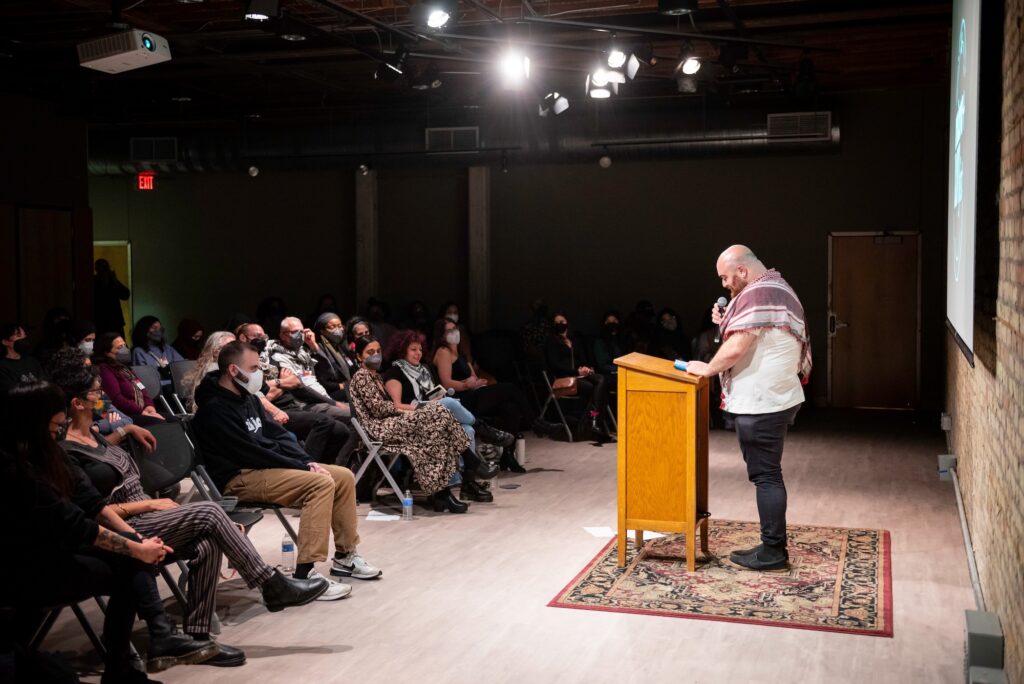
ARLike safety, I also see community and access become these kind of charged words, or words that sometimes lose their tangibility. And I’m thinking about access specifically because I know RAWIFest was almost entirely hybrid.
LSBYes, it was. That was a real intention of the RAWI board. RAWI is really an interesting, precious organization, close partners to Mizna over the years, and they’re very grassroots in the sense that there are no paid staff. The board are the people who make everything happen at the organization, and they’re located around the country and actually around the world. They had a wonderful experience with a fully hybrid festival in 2021, and so wanted to bring that level of accessibility to 2023, both in thinking about COVID safety and the financial burden of traveling to a conference and paying for lodging and all of that. There was a real intention to have everything be fully hybrid.
It made the planning complicated, but in a worthwhile way. There were some events that were fully in person and then broadcasted, and some events that were only online and that you could watch, if you attended the conference in person, in a particular room where those were being broadcasted. We also required masks at the conference. And that was, again, a real value of RAWI’s that we really respected.
ARI feel like the efficacy of these kinds of terms is so reliant on the institution’s relationships with community. When I saw that so many of the events for RAWIFest were hybrid, I was like, “Of course, these are people in diaspora putting on an event. Of course, so many of us have sustained relationships with our dearest people over the phone for years and years.” And since COVID, access has become this thing that is sort of like, “How are you going to tack this on to then have another way to be representational or representative?” As opposed to: “I’m part of this community. This is how we belong together.”
LSBThis work has to be intentional. I can sense from organizations, sometimes institutions, that these are irksome issues–like, “Oh, now we have to do this, and now we have to do a land acknowledgement,” and that they’re sort of bothersome, that we have to–”Oh, I guess we have to require masks or otherwise we’re going to be criticized.” Maybe it’s a scarcity concern: “How can we also deal with all of these things? Is it really our responsibility to also do X, Y, and Z?” Rather than, “Our community is talking about this. Let’s find out why, and let’s engage in it and learn,” so that there’s sort of a discovery and an openness that I hope drives the work.
ARCan you talk about your recent programming during the siege in Gaza?
LSBWe really shifted gears, and there were some hard conversations in the early days after the siege in Gaza began. We asked, “What are we doing? How can we do business as usual?” I mean, personally, I, as a Palestinian, simply physically couldn’t. What came out of those days were like we’ve talked about–creating spaces where community could come together around art to be together, frankly. And then having the gravitas of a film to witness together was a helpful framework. One of the first things we did was respond to a global call from Palestine Cinema Days. They couldn’t hold their festival in the West Bank because of the severe crackdown in Israel. What they asked was for the global community to host screenings of films from their selections on the same day. So we did that, and we showed the Gaza Surf Club, a documentary from a few years ago. That was at the Trylon, and it launched a number of film screenings and readings that we have put on since.
We were the space for a very moving tribute to the martyrs that were listed–the only list that’s been shared by the Gaza Ministry of Health2. We housed an installation of flags that had each person’s name written on a flag, small flags in different colors that together created the Palestinian flag. And that had been a project of some University of Minnesota partners of ours, Professor Sima Shakhsari, and the Students for Justice in Palestine, in a moving name-reading event that they held on campus. And then the flags were used at a few other events as sort of an installation–very moving, large scale, 10,000 small flags. They had the idea to house it in a gallery space and think about it as something that people could visit, kind of a somber viewing, over the course of some weeks. We were very on board for that and worked with our partners at Public Functionary, and former Mizna staffer Nailah Taman, to make that happen. It became a very necessary space for more cultural meetings and discussions and film screenings and incredible poetry readings.
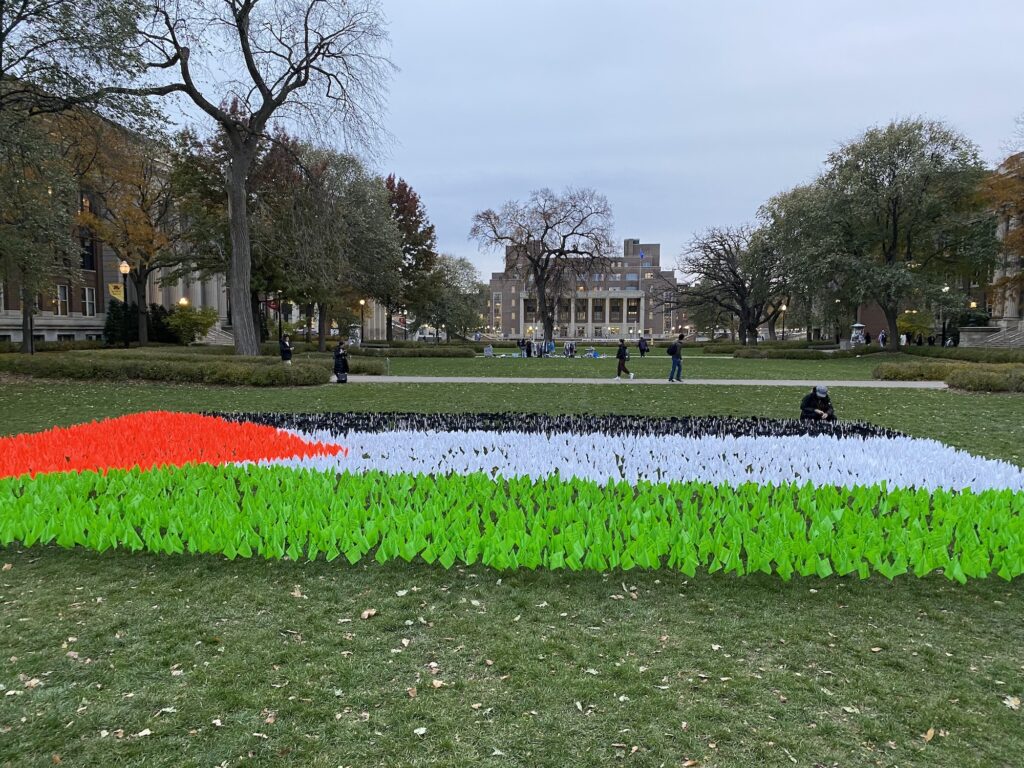
All of those were events that we had not planned for, that we hadn’t budgeted for, but we couldn’t help but do. And it was the right thing to do. There’s no roadmap as to how to meet this kind of moment. We were just sort of doing the best we can.
ARAre there other ways that Mizna as an organization and platform has been stretched to meet this moment?
LSB We have developed a deep relationship with Yahya Ashour, an incredible poet from Gaza who become a Mizna Fellow. He had traveled to the U.S. for the Palestine Writes conference in Philadelphia in September 2023, and then got stranded here when the siege began. So he’s in this limbo state, so worried about his family in Gaza, his parents and siblings and nieces and nephews–nineteen people who have been displaced multiple times, his family home demolished. We hosted an incredible reading with him and a conversation with the poet Sun Yung Shin in February, and have since published his book of his poetry online, A Gaza of Siege and Genocide. Through sales of that as well as of handmade prints and ceramics from local makers, we’ve been able to raise about $37,000 for him and his family. We’re now beginning to a project with him to publish a special folio of writing from Gazan poets that he will curate and edit, and we’re thinking about how to go about that while managing the serious issues of access that people in Gaza are facing. We don’t want to require, for example, people to submit work through an online form if it means they must risk their life to move to an area with good internet connectivity, so how do we do this through WhatsApp, things like that.
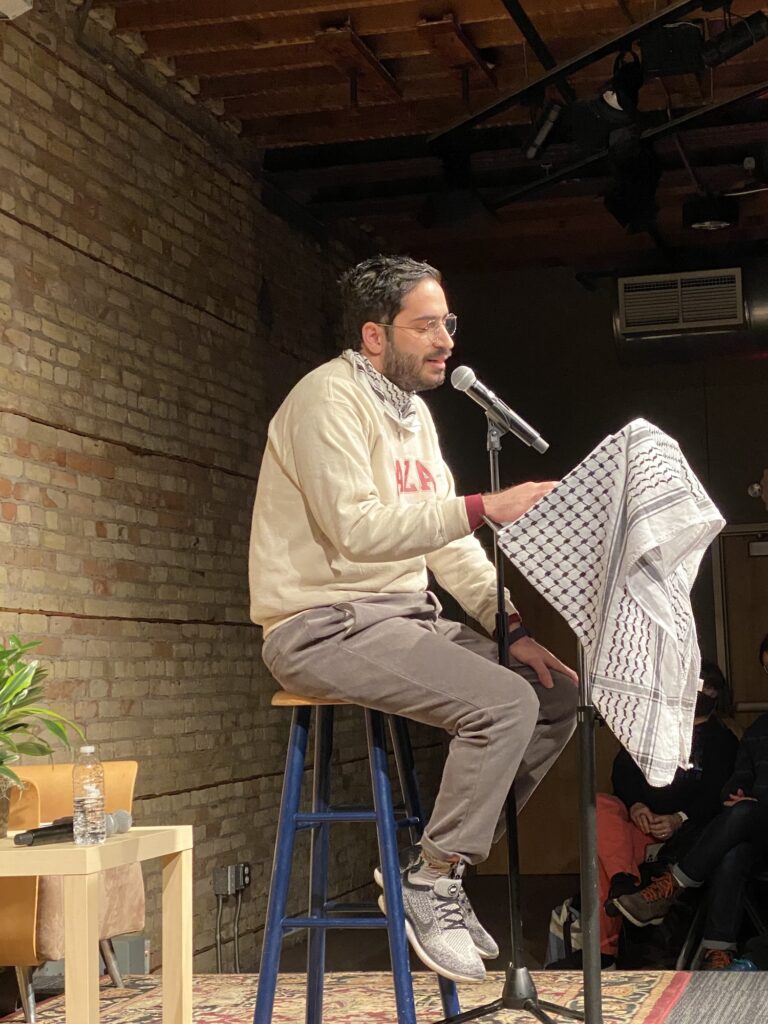
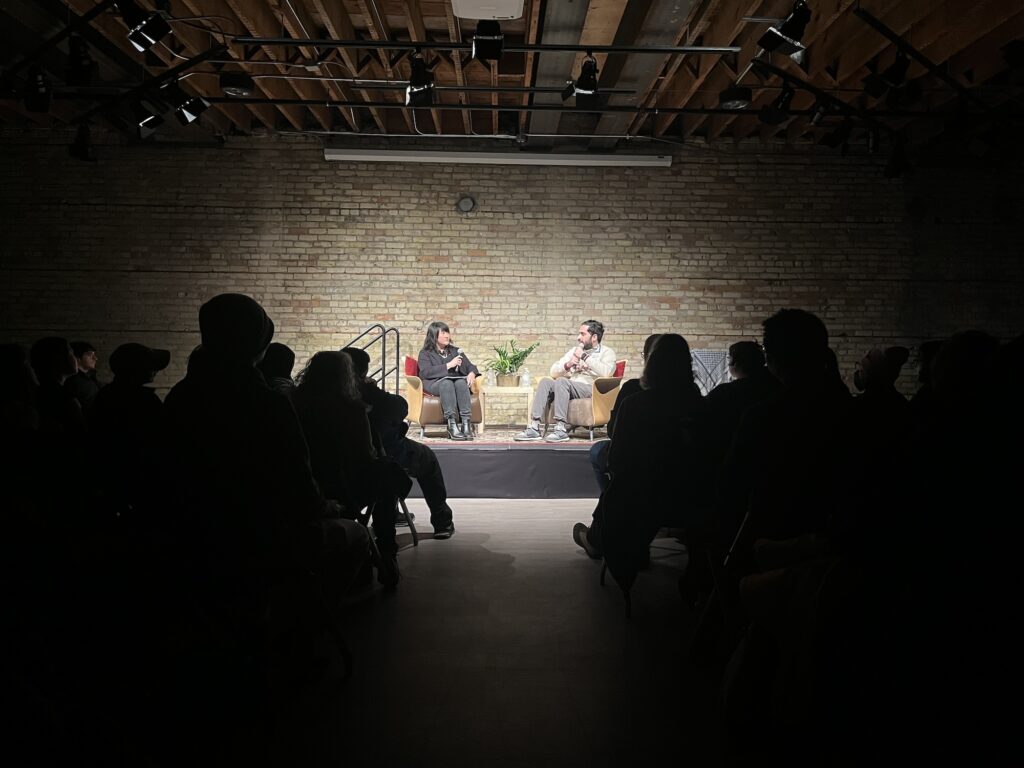
We’ve also launched an online platform for writing, Mizna Online, where we publish urgent writing on a much faster timeline than we can in print. Many of those writings are from Gazan, Sudanese, Armenian writers who are experiencing such devastation. We’re able to give their writing a home, connecting them with a readership, and to also send honoraria to them at a time of real need.
These projects have somehow fit into the nooks and crannies of our staff time and budget, and it’s meant that there are publishing delays for the print journal. Our 2024 Arab Film Fest has a specifically Palestine and Sudan focus this year. Everything has been affected by this hardest time, and I don’t think it could be any other way.